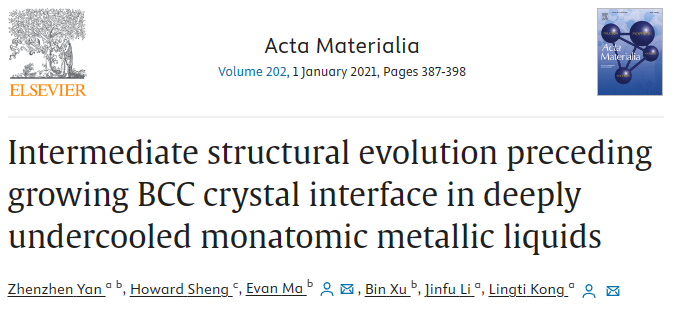
We analyze the structural evolution at the arriving crystal/liquid interface in deeply undercooled elemental metallic liquids. Specifically, we use molecular dynamics simulations to monitor the intermediate dumbbell-interstitial-like pairs (DILPs) preceding the growing BCC crystal. This new defect-mediated approach has enabled us to examine in detail the population and interconnection, as well as the energetics and dynamics, of the DILPs before they join the crystal lattice. Under large undercooling the transition of the DILP motifs into the expanding crystal is found to require cooperative and collective rearrangement and hence thermal activation with an appreciable energy barrier. In comparison, the intermediate structural motifs in FCC-forming cases are primarily in the form of 1D chains, which can be incorporated into the growing lattice via easy slide. These differences in the transitional motifs and associated activation energy barrier offer a perspective from structural evolution standpoint to explain the very different crystal growth speed for BCC and FCC metals in deeply undercooled liquids.
Link:https://www.sciencedirect.com/science/article/pii/S1359645420308740